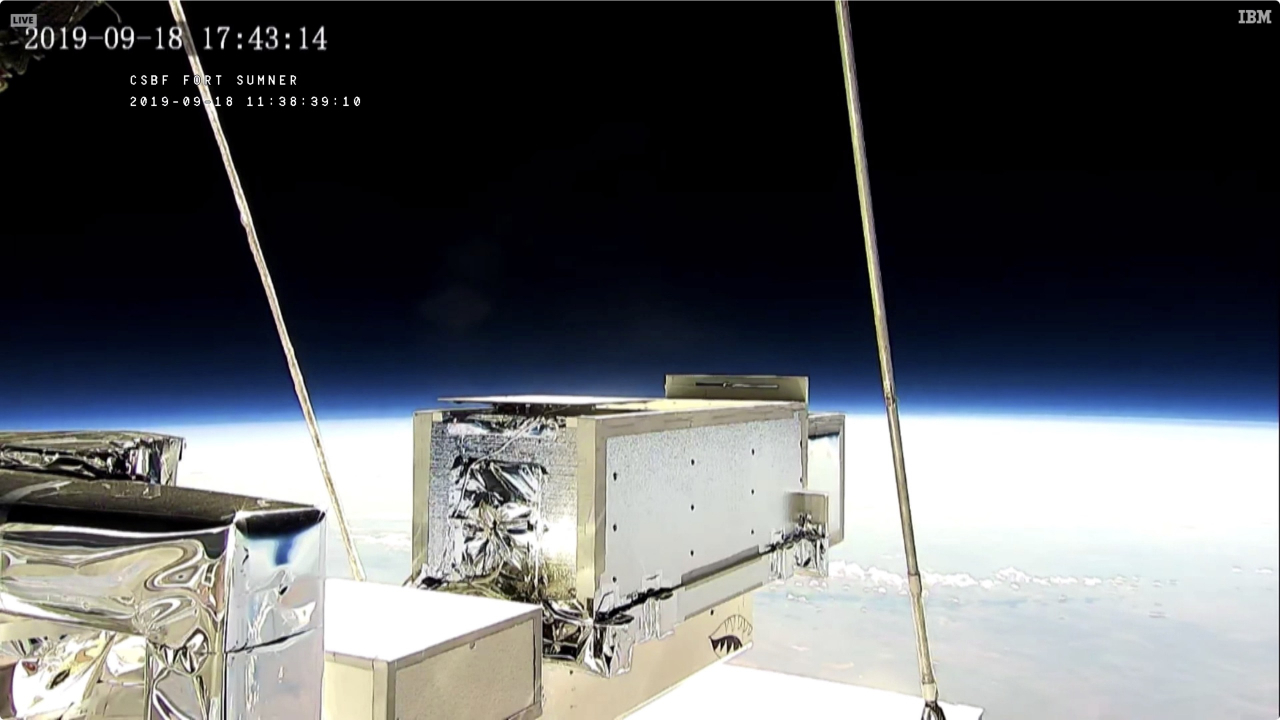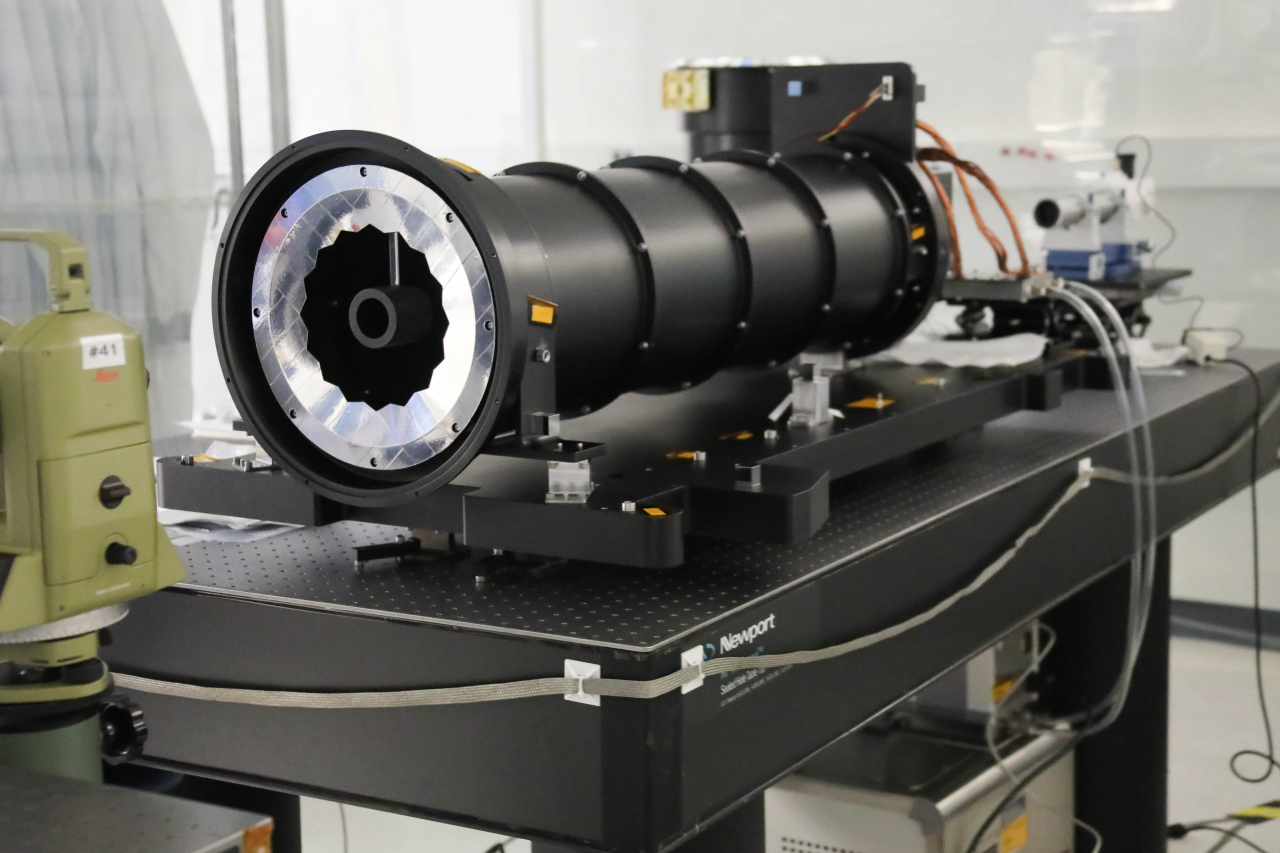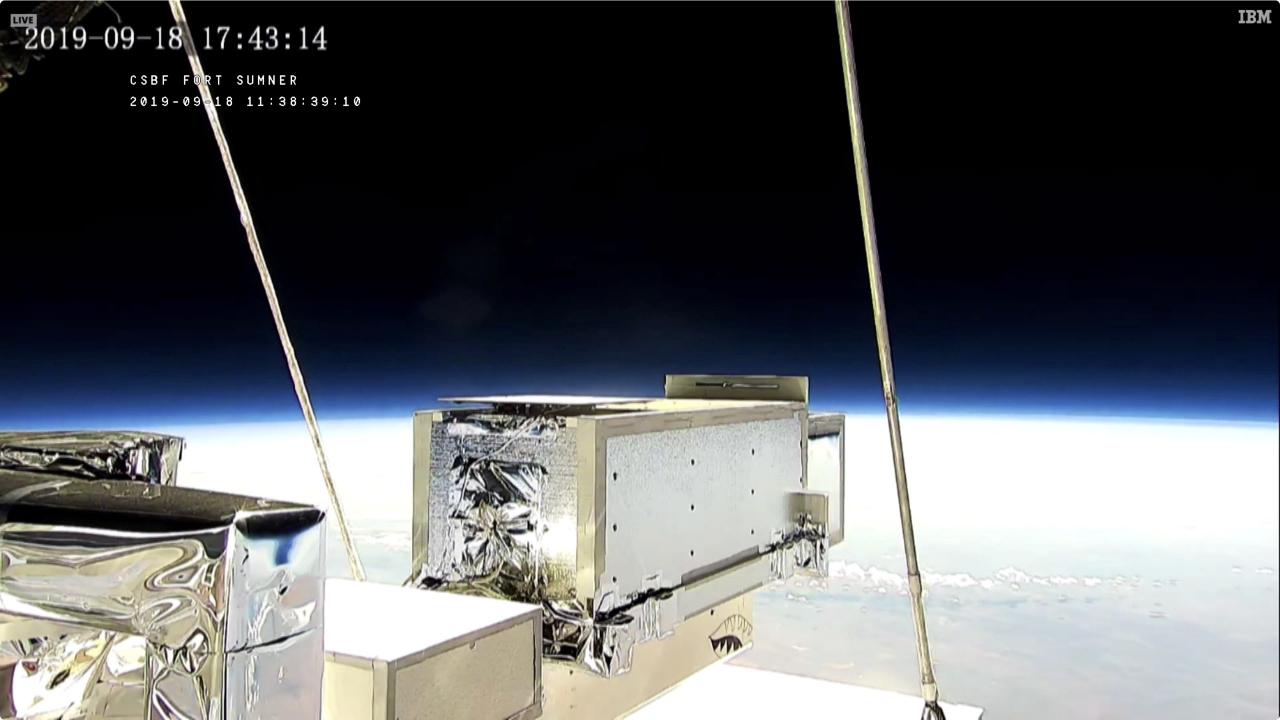“Moving to 260km from 100 degrees of solar corona”… Astronomical 硏·NASA World’s first successful observation
- -Announcement of observations of the corona graph developed jointly by Cheonmunyeon and NASA
-Prove scientific feasibility to accelerate development for subsequent international space stations

A corona graph being observed in the stratosphere on a scientific balloon.[한국천문연구원 제공]
[헤럴드경제=구본혁 기자] The solar corona is the outermost region of the solar atmosphere. Compared to the photosphere, which is the surface of the sun, the solar corona has a darker brightness and much higher temperature. In addition, the solar corona region expands throughout the solar system through rapid plasma emission called solar wind, and the high temperature of the corona and the mechanism of rapid solar wind acceleration remain undisclosed scientific challenges.
The Korea Astronomical Research Institute announced on the 18th that it obtained the temperature and speed of electrons in the solar corona area at the same time by analyzing the observation results of the solar corona graph developed jointly with the NASA.
On September 18, 2019, the joint research team of Moon-Yeon Cheon-NASA mounted the solar corona graph on a large scientific balloon and successfully observed the corona outside the sun at an altitude of about 40 km above the stratosphere. By analyzing the observation data in collaboration with NASA, Cheon Mun-yeon announced that the external corona structure has a temperature of about 1 million degrees and a speed of 260 km/sec. This is the first in the world to simultaneously measure the temperature and speed of electrons in the solar corona region, which means that the core technology of the next-generation corona graph has been successfully verified.
A typical corona graph can only measure electron density in the K-corona region through polarization observation. The corona graph, developed jointly by Cheon Mun-yeon and NASA, is equipped with a filter of four wavelengths sensitive to changes in temperature and velocity of K-corona electrons, as well as polarization observation, so that temperature and velocity values can be simultaneously realized as a two-dimensional image. It is the first corona graph designed to be.
Based on the core technology of the corona graph verified this time, Cheon Mun-yeon plans to develop a next-generation corona graph with NASA in the future and install it on the International Space Station (ISS) by 2023. The Corona Graph for the International Space Station enables long-term continuous solar corona observations without interference from Earth’s atmosphere in outer space at a much lower cost compared to the same existing solar probe.

A solar corona graph developed jointly by Moon-Yeon Cheon and NASA.[한국천문연구원 제공]
NASA Dr. Nachimut Gopalswami said, “As solar research is an important research that affects human life as a whole, NASA has been constantly trying to explore the sun. This achievement is the result that NASA and Cheonmun-yeon have steadily exchanged in the field of solar physics for the past 10 years. “The practical achievements of collaborative research.”
Dr. Kim Yeon-han, Dr. Moon-Yeon Cheon said, “This development of the corona graph for the international space station will open up an independent path for low-cost and high-efficiency solar exploration research, and at the same time, will contribute greatly to solving the secrets of corona heating and solar wind acceleration, the challenges of solar research. ”
The result of this study, which measured the temperature and velocity distribution of the solar corona at the same time, was published in the international academic journal’Solar Physical Journal’ on January 12th.
